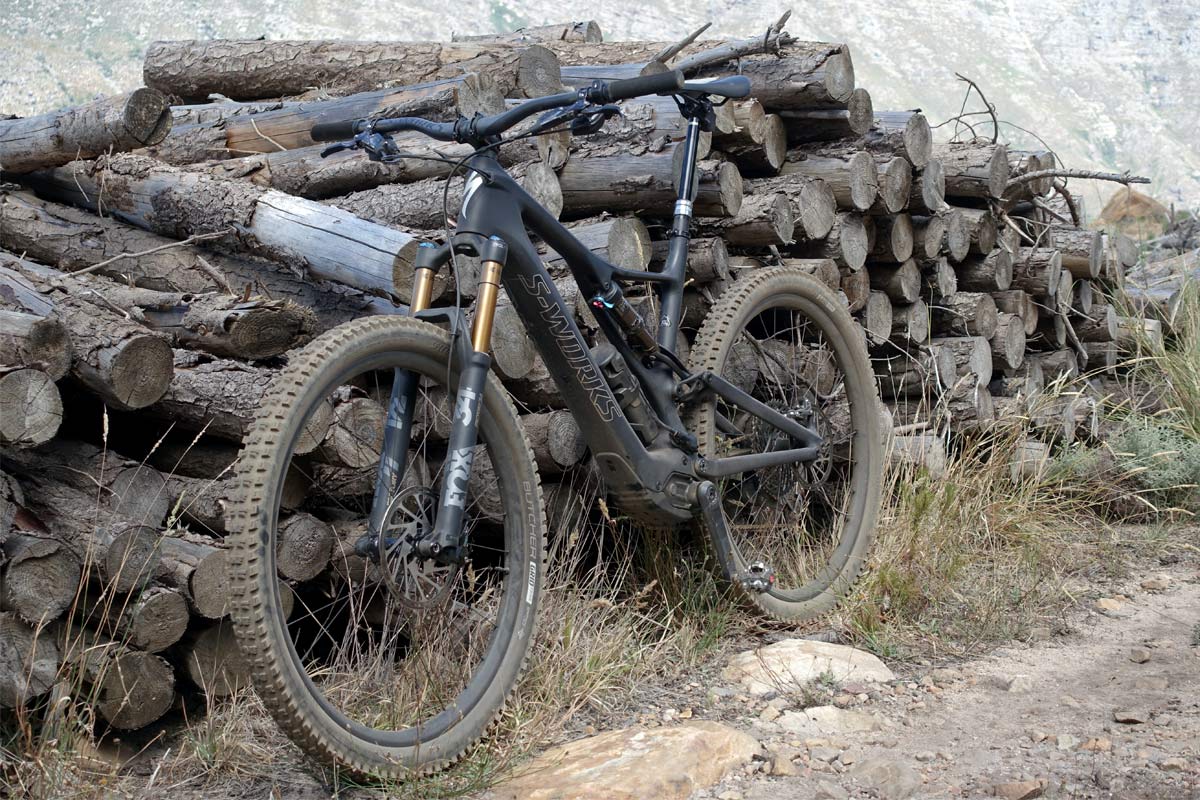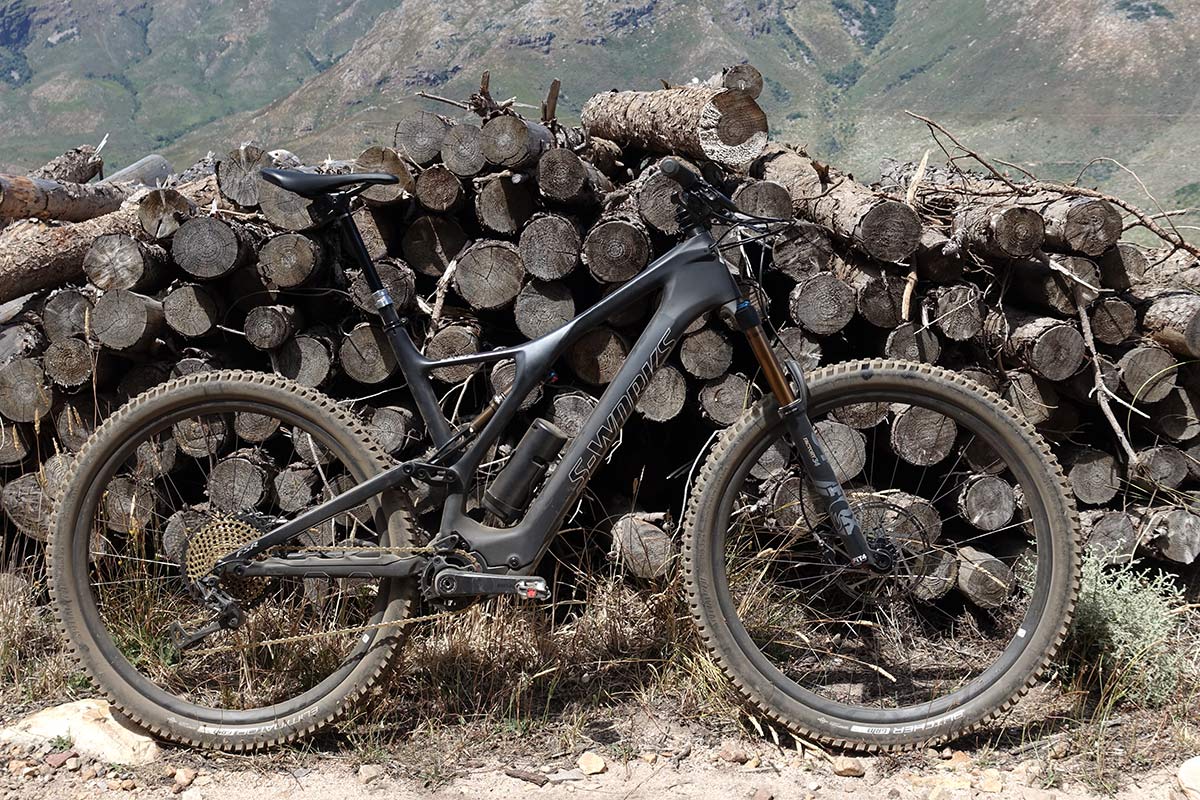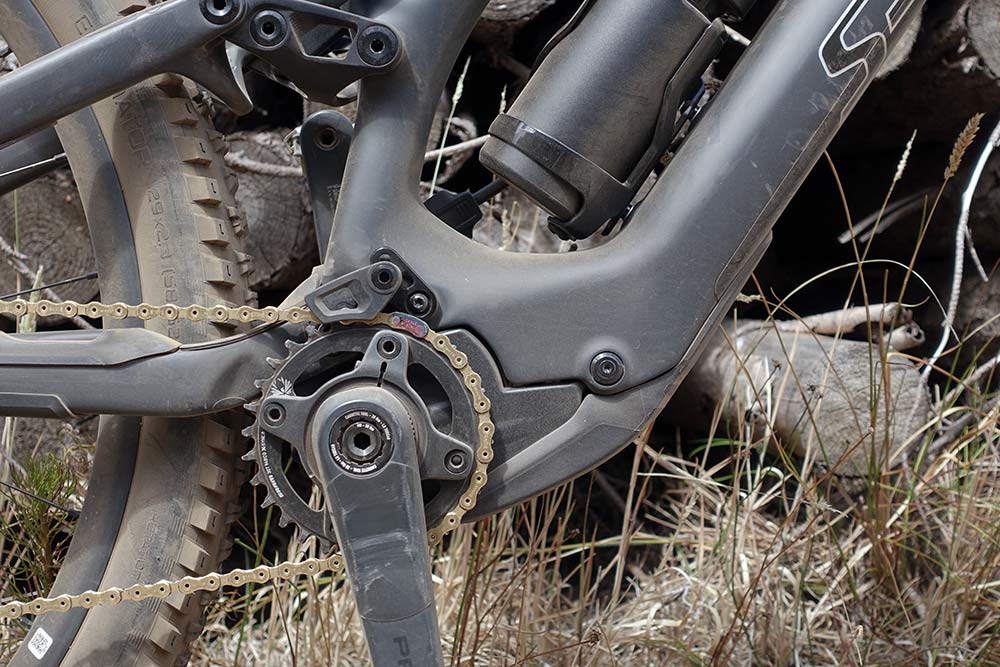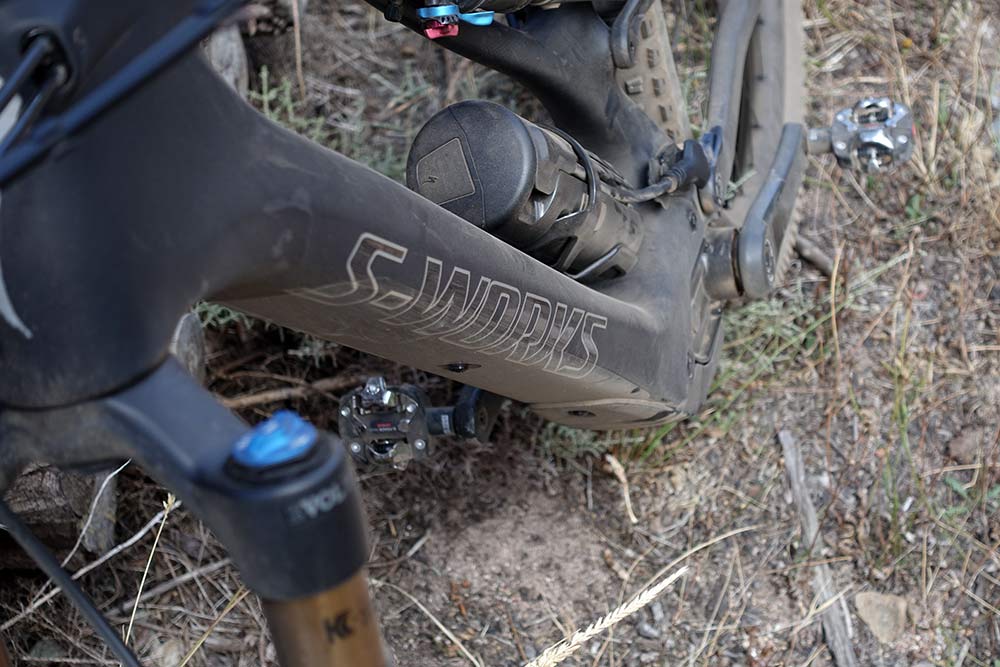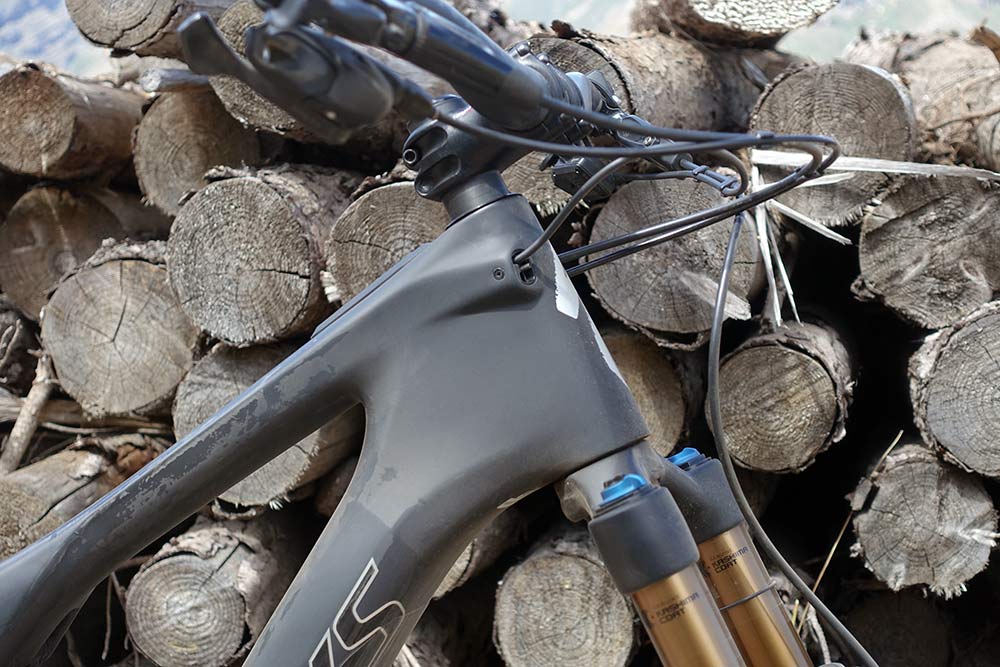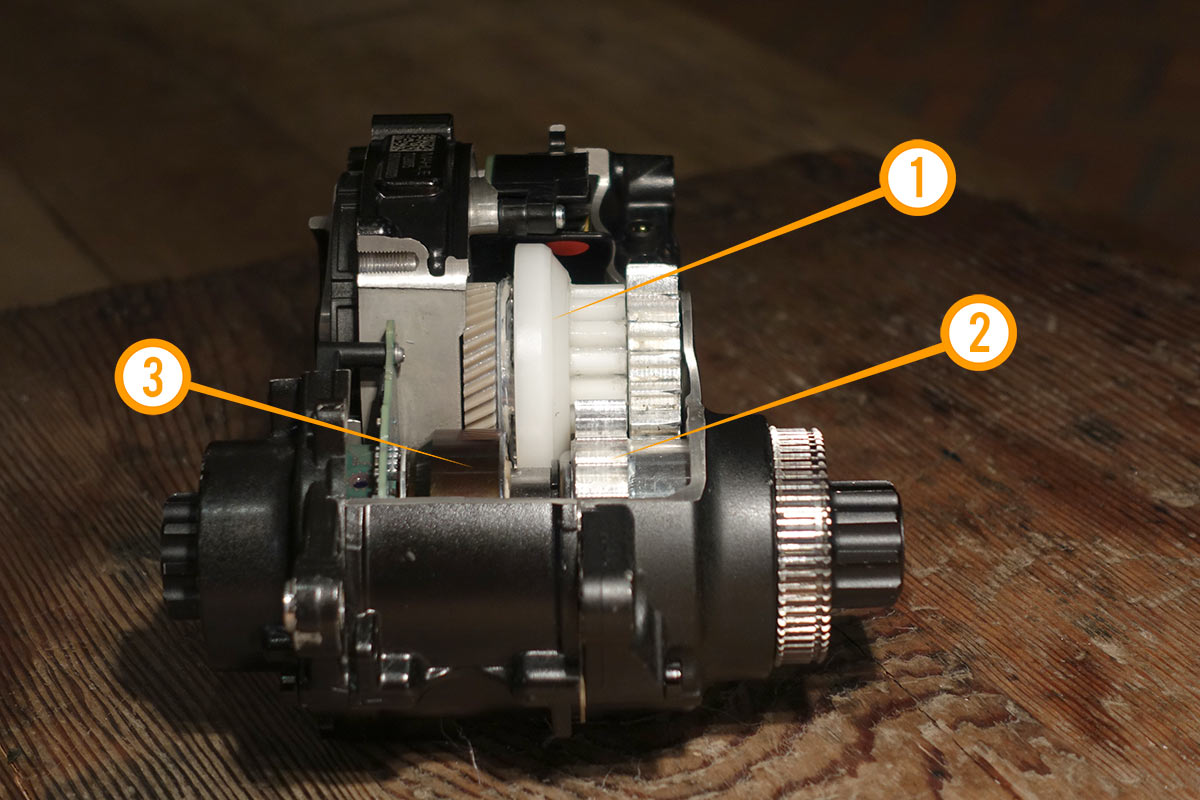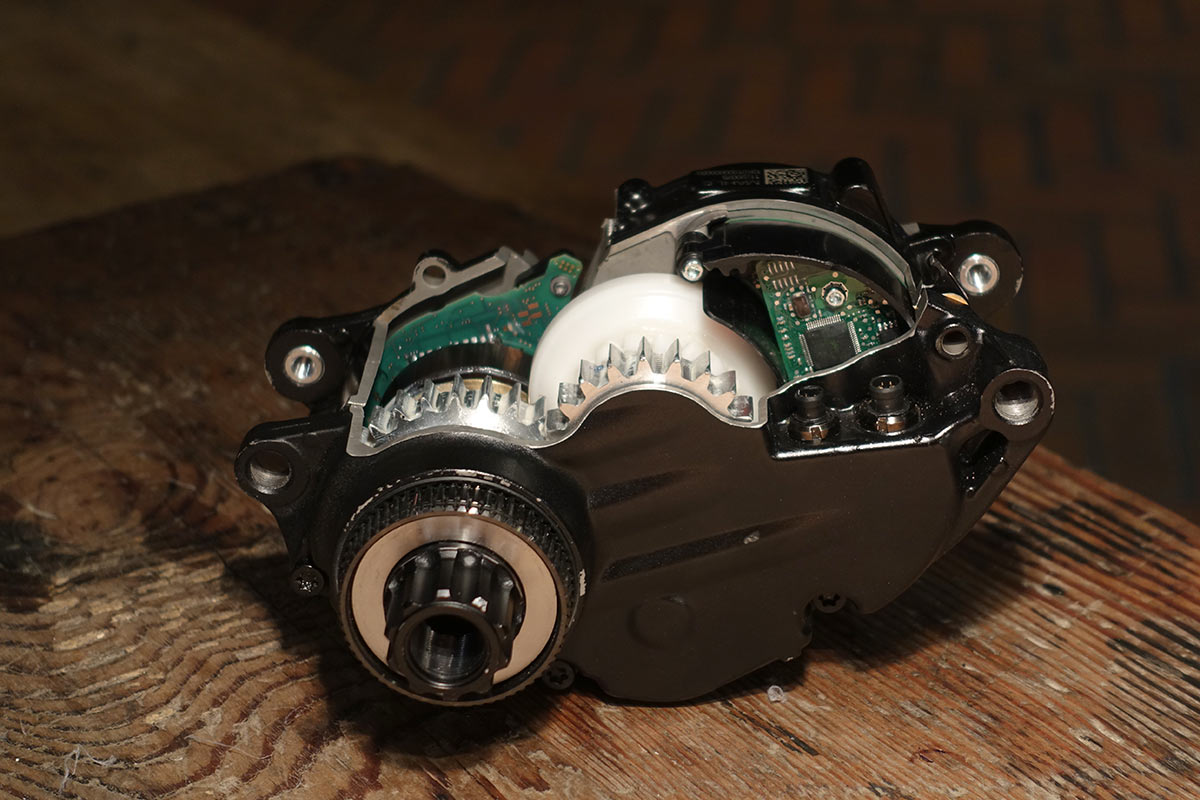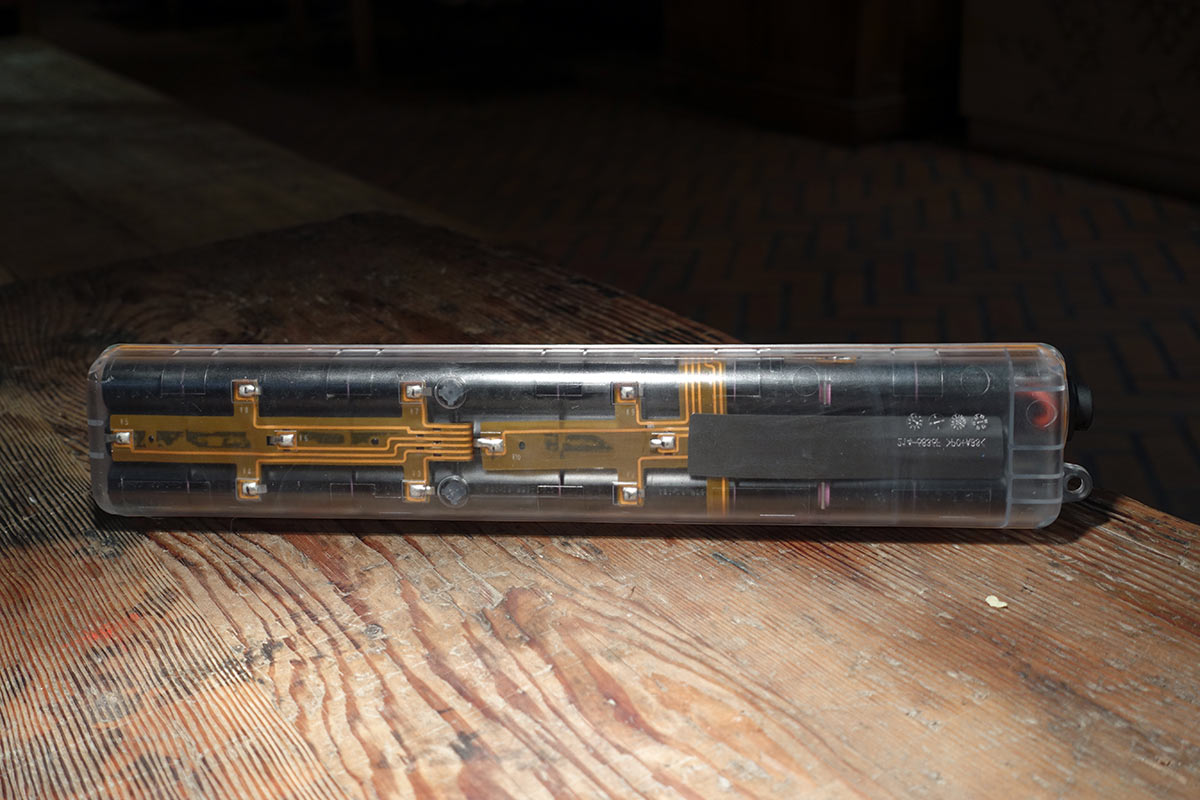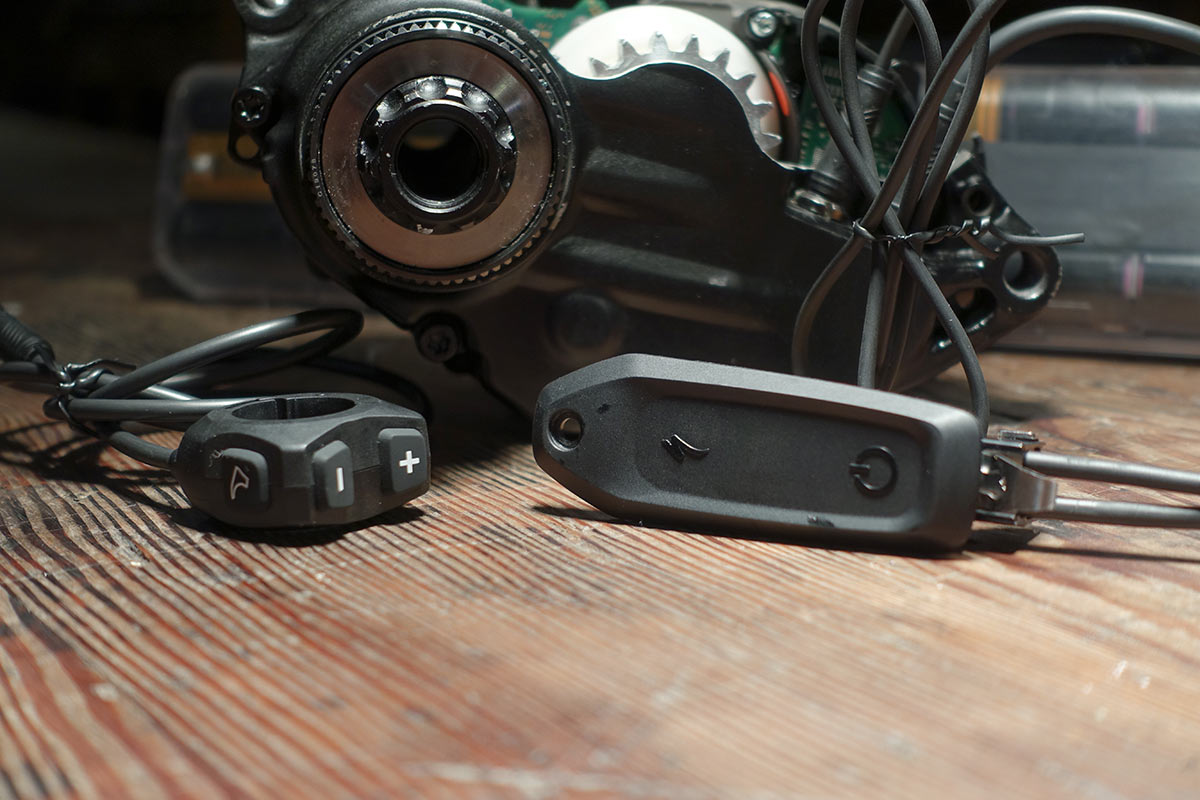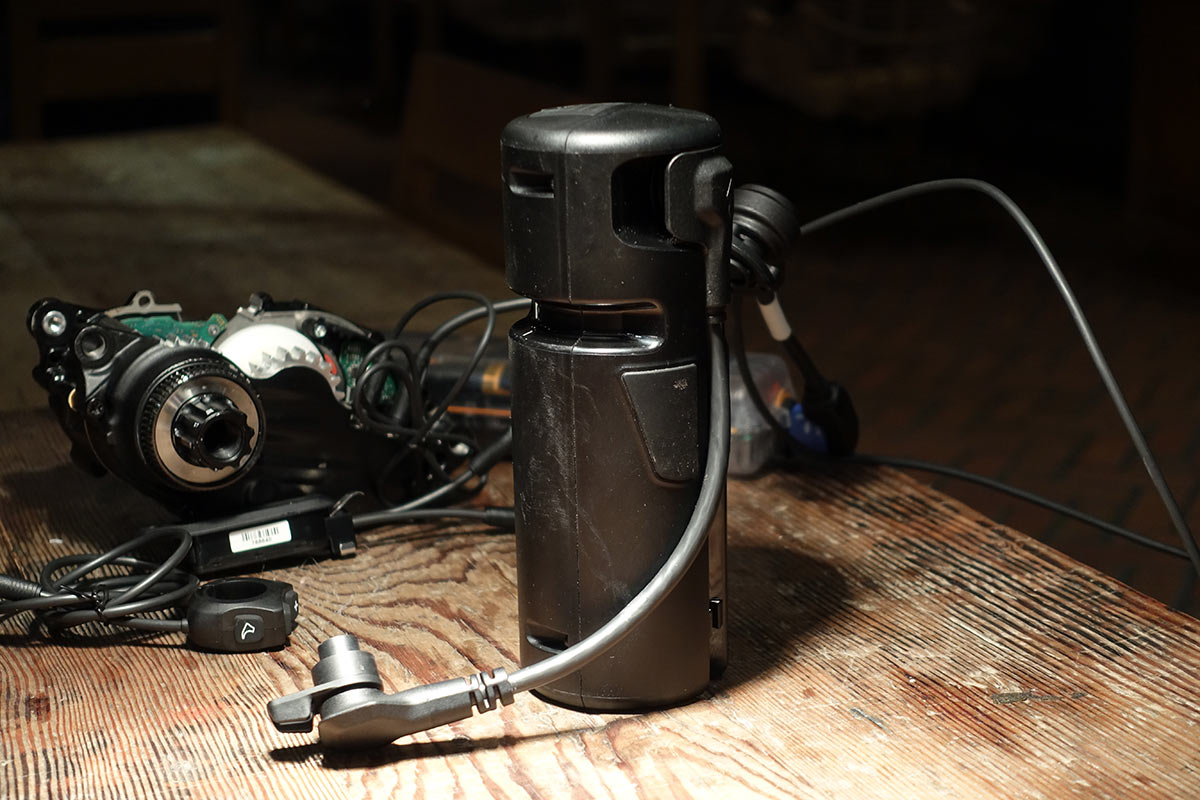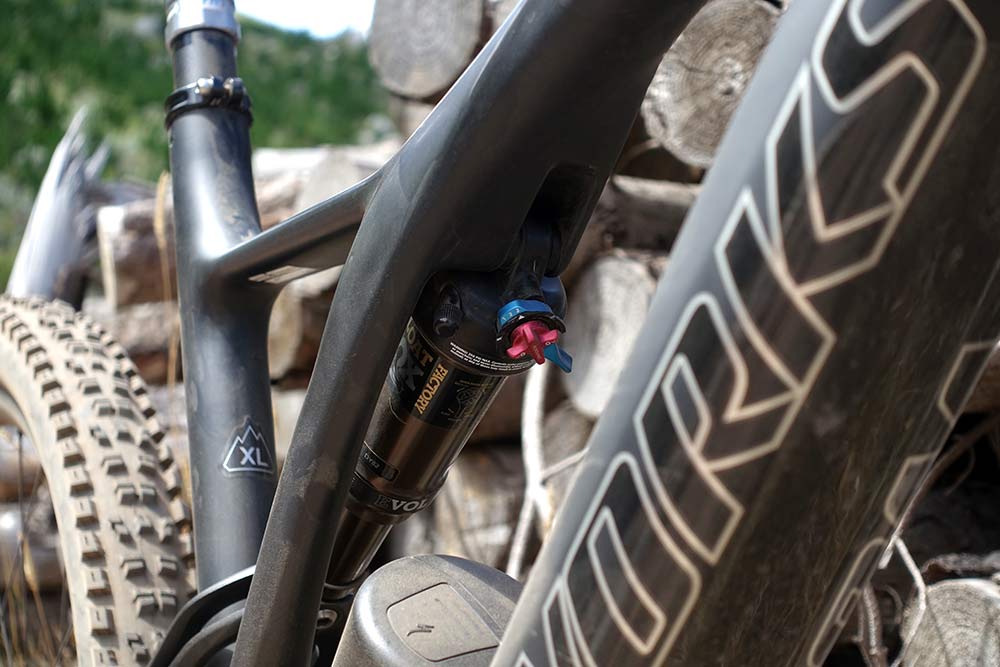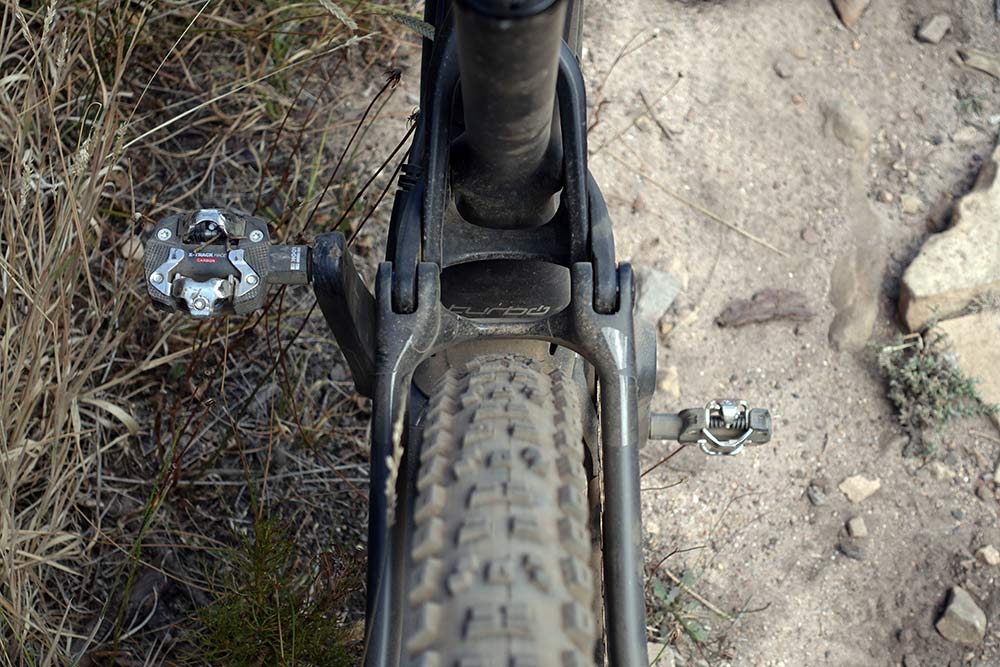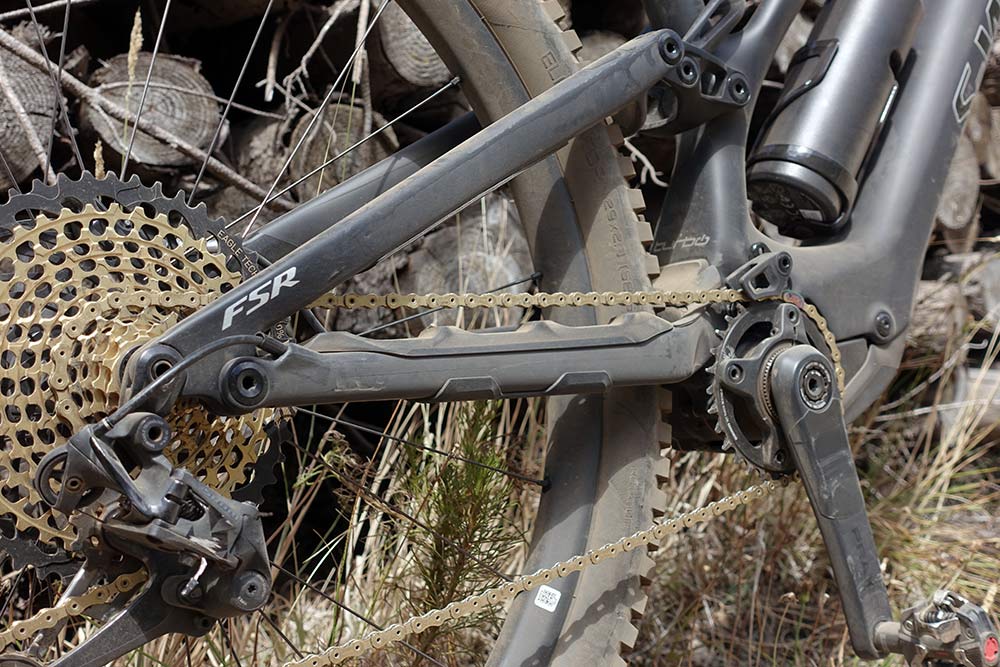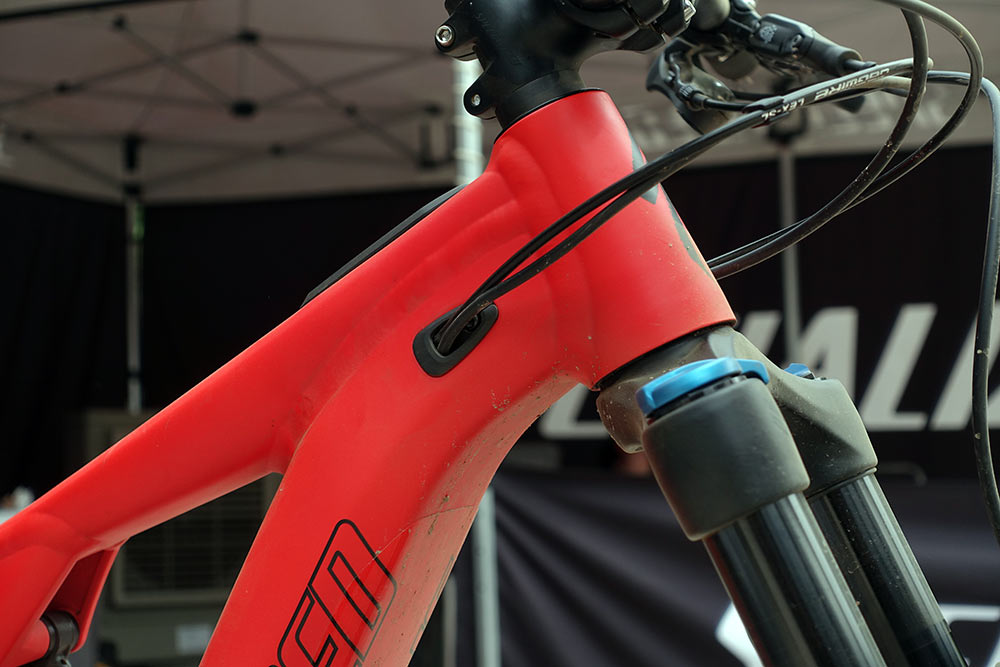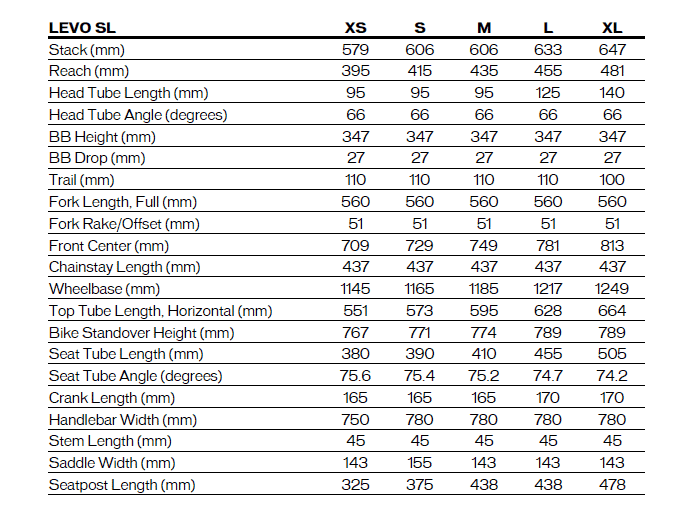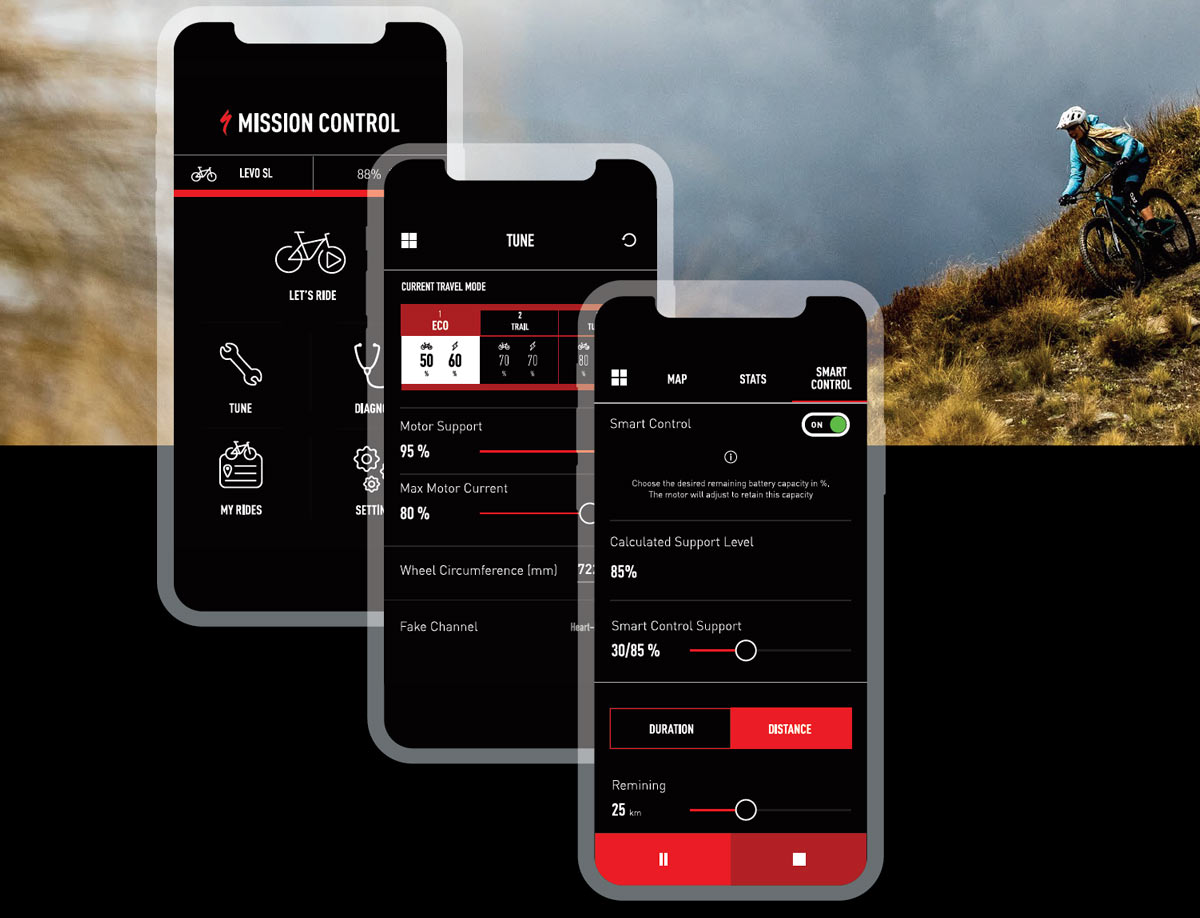The new 2020 Specialized Turbo Levo SL e-mountain bike takes a completely fresh approach to design to deliver a lightweight bike that’s ready to rock. We joined them near Cape Town, South Africa, for the launch to get all the tech details on how they saved more than eight pounds over the original Levo, cut the motor’s power consumption by more than half, shrunk the entire drive system, and still managed to increase the range. Everything about it was redesigned, borrowing some of the Stumpjumper’s geometry to improve its handling. Here’s how it all came together to create one of the lightest eMTBs in the world…
In this video, project leads Dominic and Joe talk through the motor and battery tech, and the design of the frame. We also show you how the Mission Control App lets you customize the bike’s performance, and what’s inside the motor. For a deeper dive into the development and details, keep reading…
Specialized Turbo Levo SL development story
The original idea behind their e-bikes was “You, only faster.” Meaning, the bikes should ride just like your regular bike, but feel like it’s giving you turbo legs. In fact, the first model was simply called Turbo S and launched in 2012, followed by an updated U.S. model in 2014.
The bikes have continually improved, with the Vado replacing the Turbo for commuters, and the Levo (which was updated in 2018) and Kenevo (updated in 2019) adding e-mountain bike options. Those two used their custom motor system, but still looked like an e-bike with larger motor box and oversized downtube to house the battery.
Since then, they launched the electric assist CREO SL road bike, which more closely followed traditional road bike aesthetics by offering a smaller motor and thinner battery tube hidden inside the a downtube that’s nearly identical to modern oversized carbon downtubes.
That development effort taught them what it would take to create a lighter weight bike, from design to features. And, most importantly, it taught them what they DIDN’T need to include, which is where the weight savings come from.
Turns out, there were a lot of mountain bikers who liked their Levo and Kenevo who asked for something lighter. Saying they wanted a half-size battery because they weren’t using the Turbo mode and rarely tapped out the battery on a ride. This meant Specialized could not only use a smaller battery, but also a smaller, lighter motor. It didn’t need the Levo’s 565w output. The new Levo SL gets a 240w motor with a 320Wh battery, which sounds weaker, but it doesn’t give up much.
In fact, they wanted to accomplish this without hurting range or ride quality. The motor’s tune allows the assist to come on ultra smooth. And, more importantly, fade out very smoothly, too. The battery itself provides the same range, which works because the SL’s output is lower on equivalent settings. Meaning, Eco mode on the regular Levo will give you nearly identical range as Eco mode on the SL, it’s just that the SL’s output will be lower for a given setting. But also, the new motor is more efficient.
About that new Turbo SL 1.1 motor…
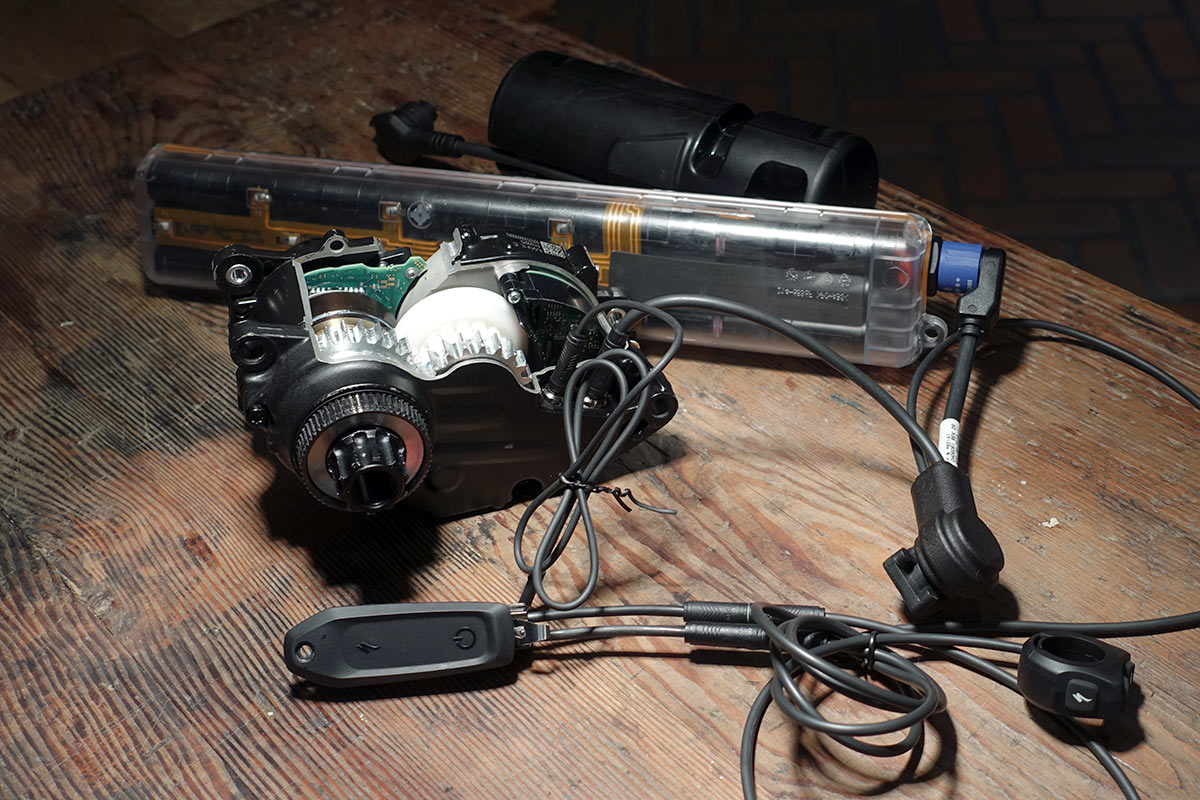
Getting this new motor to be so small and so efficient was a big exercise in hardware and software development. They played with a lot of different coil winds inside the motor, different software tunes to adjust output at different cadences, and a ton of data recording to get it all right.
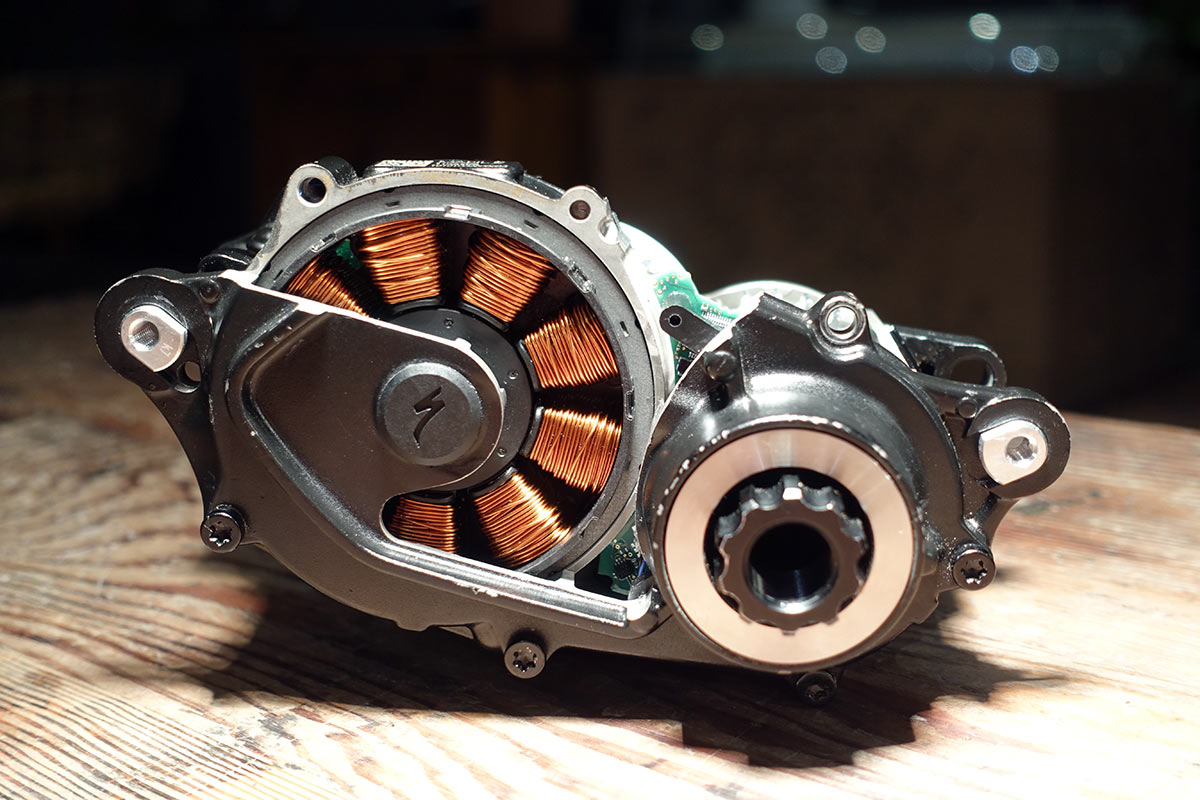
The result is a motor that, they say, has a broader range of torque that provides proper output all the way from 50rpm to 120rpm cadences, but with a sweet spot around 90rpm. Why go all the way to 130rpm? Not because very many people pedal at that rate all the time, but all of us will do it for a pedal stroke or two here and there when negotiating tricky terrain. If the motor cut out during those fraction-of-a-second instances, it wouldn’t feel right and would disrupt your flow. And that was unacceptable…remember, their overriding goal is that it has to ride like a regular bike.
The other part of that is that the motor has just 2.8 watts of drag when turned off or if you’re pedaling at a speed above the assist level. For comparison, they say a standard Dura-Ace BB creates about 1.8w of drag. So, if you do drain the battery or just want to turn it off for a bit, you’ll barely notice any drag (just the extra weight of the bike).
They were able to achieve this by putting roller bearing clutches in both the main drive gear (2) and torque sensor (3), both of which sit on the main crank spindle. The motor is housed in a separate shell (top, left) to reduce heat transfer to the circuits and gears. It transmits its rotation into the mix through a set of planetary gears hiding inside that big plastic gear (1).
The system has a 1:50 gear reduction. So, if you’re pedaling at 100rpm, the motor is spinning at 5,000 rpm. The standard Levo spins at just less than half that speed, making the SL motor far more efficient because brushless motors like to spin faster.
Two circuit boards are inside, one for the torque sensor (left) and the main PCB (right). Directly in front of the the PCB are the only two plugs going in and out of the motor – one to the battery, and one to the control switch mounted in the top tube.
To protect it from river crossings and those of us who will use a pressure washer even though we’re not supposed to (but seriously, don’t do that), they use industrial seals to give it an IP67/IP68 rating. Inside the casing is a vent with a GoreTex seal, which protects it from sucking in moisture from the air as temperatures change. Motors get hot when they’re running, so if you’re riding in the wet and then park it, as the air inside cools and condenses, it wants to pull moisture in, so this protects it from that.
How does Levo SL compare to the regular Levo & Kenevo?

Size-wise, the new Levo SL’s motor housing is much, much smaller. Which lets them use shorter chainstays…same as what’s on the standard non-motorized Stumpjumper. By the numbers, here’s how they stack up:
| MOTOR | BATTERY | TORQUE | RUN TIME* | |
| Levo SL | 240w | 320Wh | 35Nm | 75 min* |
| Levo | 565w | 700Wh | 90Nm | 60 min* |
Now, to explain those numbers. First, the *Run Time is if you’re pedaling on full Turbo assist non stop. The more realistic range using a mix of assist levels and normal pedaling is closer to three hours. And apples to apples, the SL will outlast the regular Levo despite that models’ much larger battery. Why? Because math:
The Levo SL’s actual, non-mechanical (i.e. “electrical”) output is 276w x 85% efficiency, and the Levo’s electrical is 678w x 80%. I don’t have the actual “data for nerds” calculation in front of me, but suffice to say the SL is considerably more efficient. No, it’s as powerful as the Levo and Kenevo, but it’ll last longer and is meant to feel more like a regular trail bike for the rider who wants something lighter and more nimble.
But the Levo’s faster, right?
Oooooh, yeah. A lot. All of the bikes have Eco, Trail and Turbo modes. But the amount of assist that the Levo and Kenevo dish out is much higher as a percentage of your effort. And they have “Shuttle Mode”, which delivers 100% of available assist immediately upon pedaling, which is meant to rocket you back to the top of the mountain. It’s fun. But it’s not something that makes sense for a bike like the SL. Soooo, the SL does not have Shuttle Mode.
The motor development started in 2016, and it’s being made for them at a third party supplier that hadn’t done bicycle components before. It’s 100% Specialized’s design, but built externally, and they have a 5-year exclusive on it.
The electronics are upgraded to 48V (compared to the Levo/Kenevo’s 36v system), which allows them to use smaller, lighter connections between battery and motor. But, the connector to the control module and remote are the same as on the Levo and Creo, which shares parts for more bikes to make it easier on dealers and customers alike (and Specialized’s warehouse, to be sure). Those parts are designed to work with both 36V and 48V, too…because they’re 12V.
Confused? It’s simple. The internal battery has a DC/DC splitter that sends 48V to the motor and 12V to the controls.
Unique to the Levo SL is the the Range Extender battery, which adds 50% more range.
There’s 320Wh in the main battery, and 160Wh in the extender. Doesn’t sound like much? It’s not, when you compare it to traditional e-bikes’ batteries. But since the new drive system is so much more efficient, it’s able to deliver slightly better range than the regular Levo.
It, too, is a 48V battery, so it’s not compatible with other Levo models. S-Works model comes with one Range Extender battery, and the ultra-high-end Founders’ Edition comes with two. More on those in a minute.
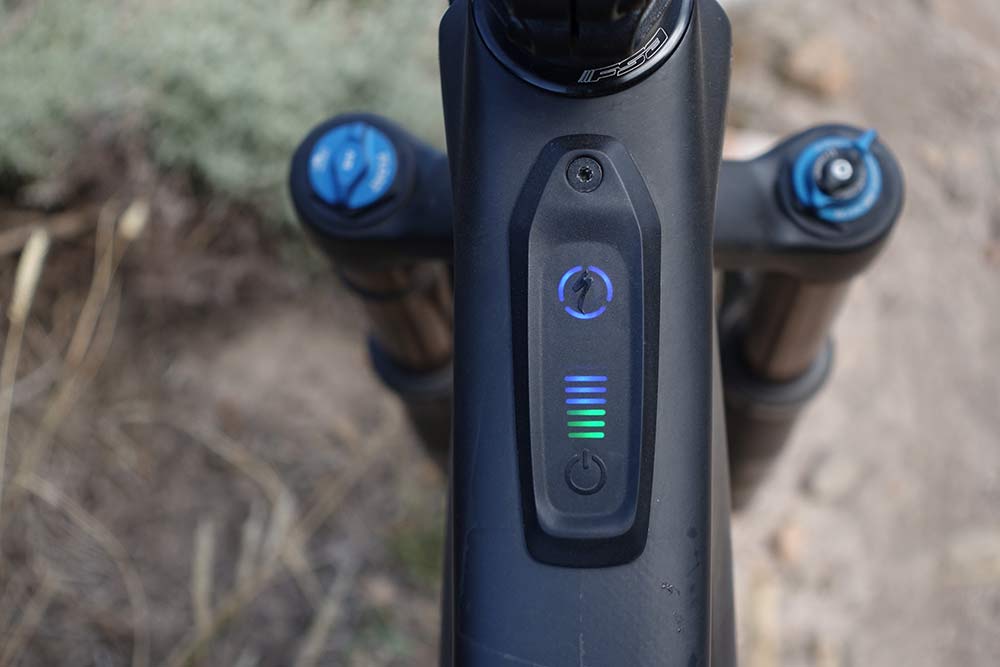
Within their Mission Control App, you can tell the bike to use the Range Extender’s battery first, or run it in parallel. They recommend running it in parallel except when you might want to drop the extender off mid-ride to save weight, then swing by and pick it up on your way back home. Why? Because as the extender discharges, it’ll drop voltage toward the end of its life, which will make the bike feel slower than normal for a few minutes before it automatically switches to the main battery and you get full power again.
The main battery is removable, which is good for when you have to fly with it, but it requires you to remove several of the motor’s mounting bolts to swivel it out off the way, then unbolt and slide the battery out. Technically, you could save 800g by riding with ONLY a Range Extender on there (electronically, it works), but (officially) they have not tested the frame’s safety and stiffness without the battery…yet. So (officially) they can’t (officially) recommend that you ride the bike without the battery installed, however the internal battery is NOT a structural element. The CREO uses the same motor system and it HAS passed testing without the battery installed, so this one almost certainly will, too.
Takes about 3 hours to recharge it, which they felt was the right compromise between fast charging and maximizing long term health of the battery. Technically, they could have made it charge faster. But they’d have preferred to make it charge slower. Because Li-Ion batteries last longer when you slow charge them.
Now, back to the bike
The Levo SL is a mix between the Levo and Stumpjumper platforms and shares most of the same features. Side arm suspension design, 150mm front and rear travel, internal cable routing, flip chip geometry adjustments…
Geometry is very similar to the Levo, but gets a much shorter 437mm chainstay length…just like the Stumpy. That’s down from 455mm on the Levo.
Continuous downtube houses the battery pack, which both saves overall weight and makes it look better. You’ll find other familiar touches like their wave-form chainstay guards to kill chain slap…
…and a SWAT mini-tool system in the steerer tube on all trim levels. Speaking of…
Specialized Turbo Levo SL models & pricing
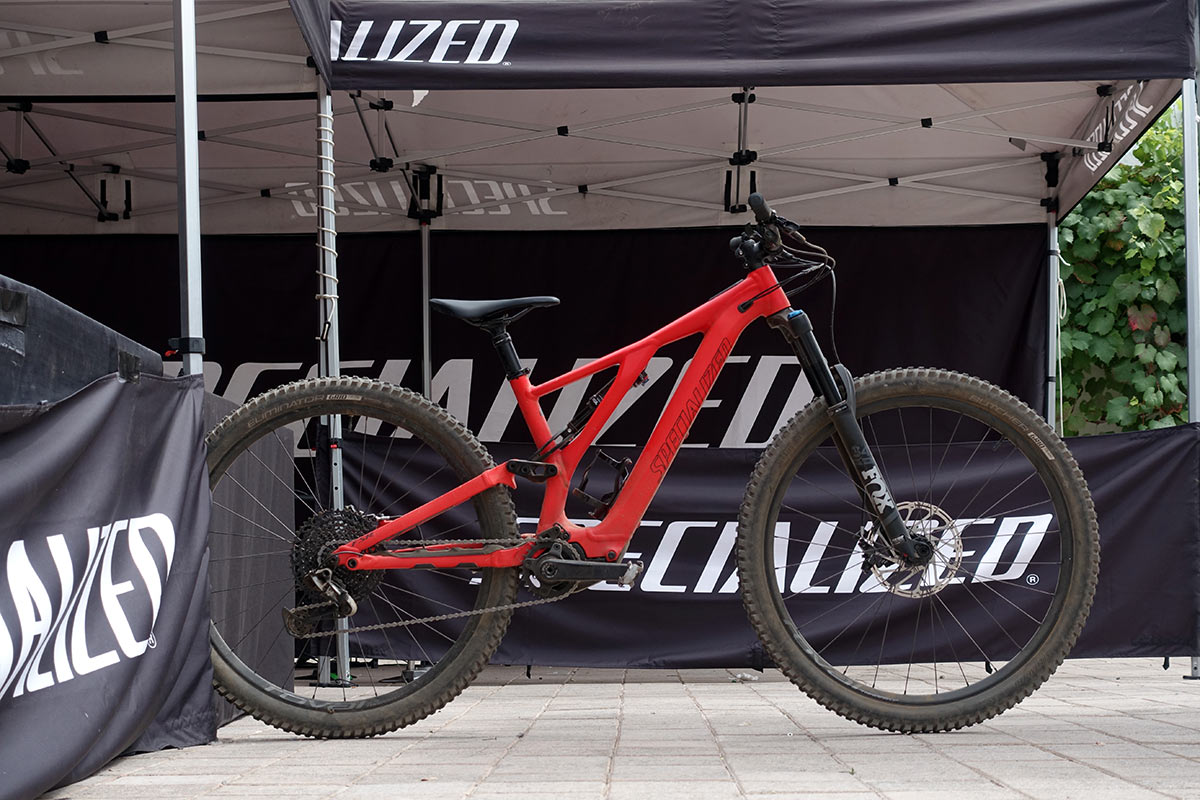
They’ll offer one alloy model and five carbon models. What’s particularly impressive is that they’ve managed to get it down to an XS frame size on the alloy version, still with 29er wheels. They say that’ll fit riders down to 1.2m (~4ft tall), which means most 10 year old kids can fit on it.
And this works for two reasons beyond just being able to fit them. First, it’s not so heavy as to make it hard to handle. Second, with their Mission Control app, you can adjust the motor output to appropriate levels for the younger rider.
Specs? Geometry? Can I fly with it?
Here’s the three main numbers you need to know about the frame:
- 29er only – There’s clearance up to 2.4″ tires, and it comes with 2.3″ tires. They do not recommend swapping out the rear for 27.5+ because it’ll mess up the geometry.
- 150mm travel – Front and rear, travel is matched, same as the Levo, and a little more than the Stumpy. They do not recommend putting a longer travel fork on the front because it, too, would mess up the geometry.
- Shock size – It uses the same Sidearm design as the others, and a standard-mount 210mm (eye-to-eye) shock with 52.5mm stroke. So, if it fits, you should be able to put a coil spring in there if you want, but that sort of takes away from the lightweight nature of this bike.
Because the battery is removable, yes, you can fly with the bike. But you may want to invest in a couple of Range Extender batteries and just bring those in your carry-on luggage. Those are 160Wh and generally fall within carry-on restrictions.
Mission Control App lets you customize the performance
Actually, they even have a “Kid’s Bike” tune setting inside the Mission Control app. Choose that, or use the two variables (effort and output) to set it up however you like (check the video to see how that works). It also has presets, letting you save custom presets for each mode into their own groups. It’s called Infinite Tune, and it lets you create different profiles for different types of rides (like, say “family riding with kids” versus “Sunday hammerfest”).
Smart control lets you choose the distance or time of the ride, then the system calculates how much assist to give you so that you end up with the desired amount of battery life left at the end of the ride. They’ve had this before, but now they’ve added elevation using your smartphone to tell it how much of your anticipated climb you’ve done, helping it predict power requirements more accurately.
Want more? It also now has Heart Rate control. Set your target HR and it’ll adjust the power assist to try to keep you at your target range so you get the workout you want. It uses any Bluetooth HR strap that’ll pair with your phone.
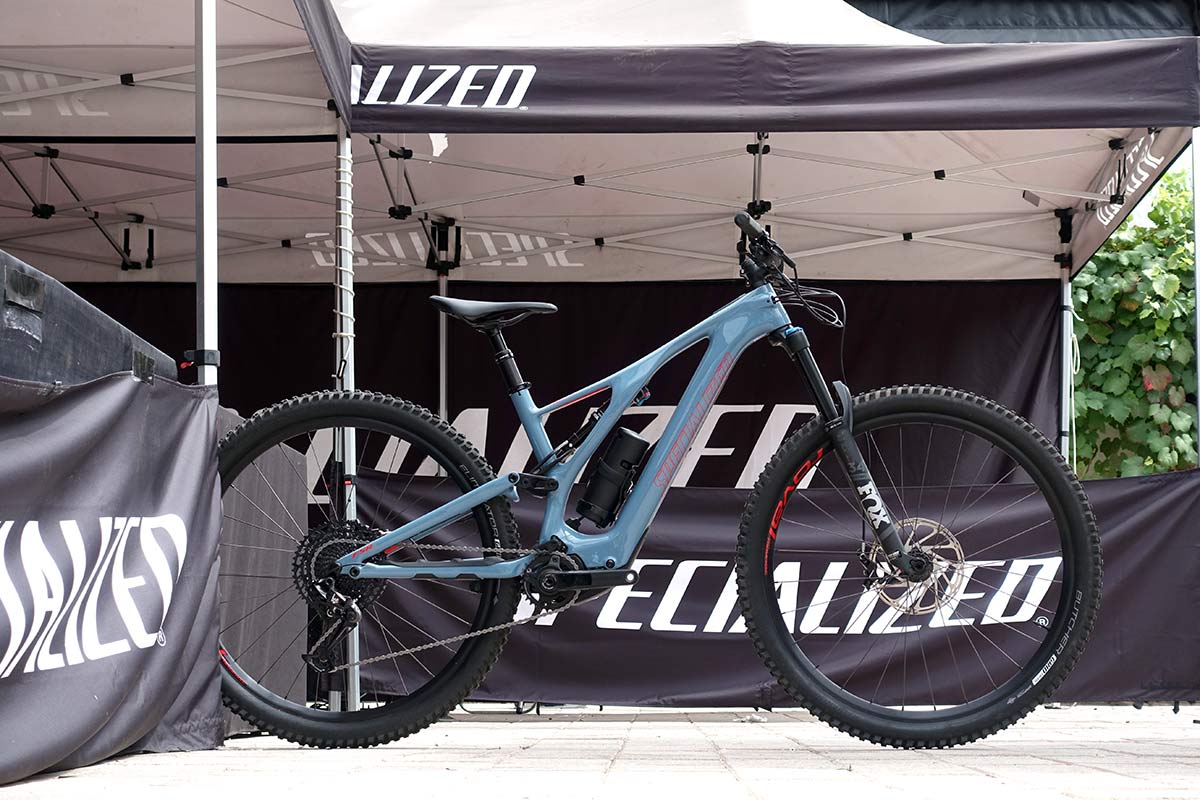
Or don’t add any of that, leave your phone at home, and remove the remote…you don’t need any of that to use it. Heck, they even have “Dark Mode” that’ll turn off the lights on the TCU so it won’t distract you on a night ride (and your riding buddies can’t see what mode you’re in).
The TCU broadcasts in ANT+ to send speed, cadence and power data to any compatible cycling computer. It also has a private Bluetooth transmission to communicate with their app, and a hidden USB port for servicing it at your local dealer.
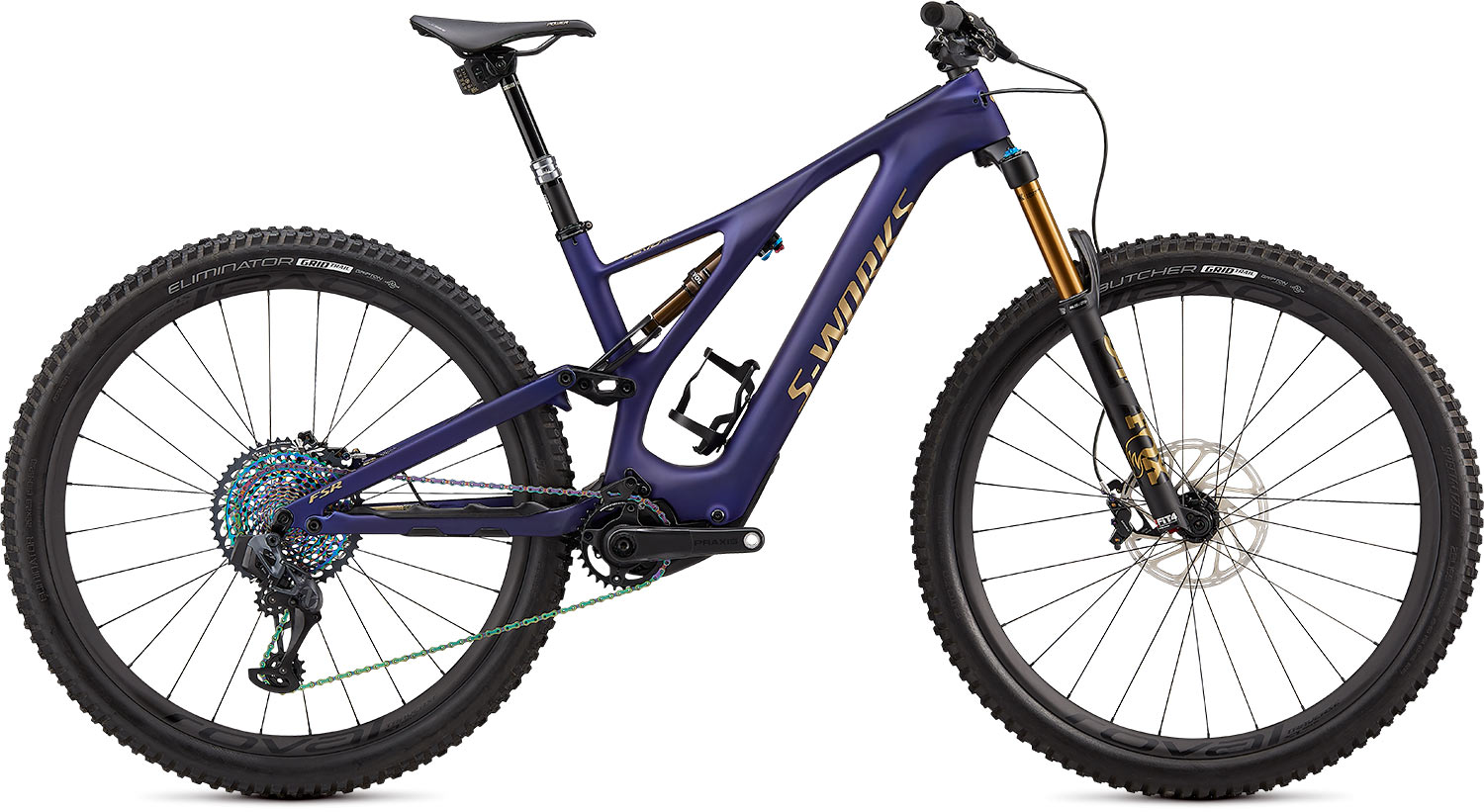
Claimed weight is as light as 16.9kg for a size Small with tubeless tires. Weight in the catalog is an S-Works size Large with tubes coming in at 17.35kg (38.25lb). They got one down to 14.99kg with pedals, but in proper trail build they’re easy to keep under 17kg. Regardless of trim, you’re looking at about 8.8lb savings over the standard Levo, model for model.
The new Founder’s Edition is more bespoke than S-Works, with only 250 available globally and a price tag of $16,525. Add a range extender battery to any bike for $450 (€399). All model prices are:
- Comp – $6,525
- Comp Carbon – $7,525
- Expert – $9,025
- S-Works – $13,525
- Founder’s Edition – $16,525
For the full ride review and action shots with video, click here.
